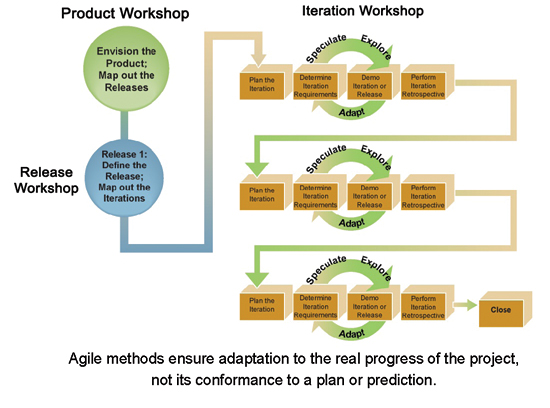After traveling the globe and speaking with clients across the energy industry, I have come to see that significant project management trends coming “down the pike” in 2011 will have long-lasting impact on both project management and the electric utility businesses that rely on the discipline to take strategies from ideas to reality. Are you ready? – LeRoy Ward
Major industry projects, such as transitioning to smart grids and deploying smart meters, present challenges for project managers due to the complexity of the technology, coupled with addressing community concerns and regulatory requirements. These and other industry transforming projects set the stage for 2011.
First A Solid Foundation
Regardless of the trends, it’s important to remember that all good project management starts with a solid foundation. This means following the golden edict of ‘people, process and tools.’ In practice, this means teaching your people the skills and knowledge they need; putting in place consistent processes for them to follow; and then providing the tools for them to effectively apply their knowledge and follow the processes efficiently and effectively.
In addition to skill development, strong team development is essential to the ‘people’ portion of building a solid foundation to improve project outcomes. Rather than fixating on hiring or technology as the cornerstones, organizations need to invest in creating a team-oriented culture that actively breaks through the outdated approach of project managers working in silos, each handling their own piece of the project management pie.
While learning is an essential element, gone are the days when training and certification were “good enough”. Today learning must be approached as a long-term, integrated effort to improve performance, rather than a one-time event. Successful learning programs help teams work in alignment – with each other and with the organization’s goals – not just deliver information, which may or may not be absorbed and applied on-the-job.
Knowing that you have a strong foundation in place will help you and your organization be ready to gain value from the project management trends of 2011. In some cases this will mean taking defensive action, but for most of these trends, the real value is in using them to implement a strong offense and leap ahead of the competition.
As you’ll see, several key themes emerge from my 2011 PM trends, such as the need to continue to build on the project manager’s organizational influence; an acceleration in the demand for PMs with outstanding leadership and communication skills; and the use of more informal learning modalities such as social media and experiential training – also known as action learning – for professionals and their organizations to realize the full benefits of strong project management.
Leadership Skills Will Be the PM’s Critical Success Factor
Only eight percent of utilities around the world have completed their smart grid technology implementations while 37 percent have projects underway and more than half haven’t yet started, according to a 2010 Microsoft Corporation survey.
Leadership skills, such as critical thinking, crucial communication and organizational change management, will be strategically imperative project management competencies essential to successful smart technology rollouts.
In 2011’s project management landscape – featuring more complex projects and greater use of virtual teams – being on time and on budget will require not just a laser-like focus on the triple constraints, but on the requisite leadership skills necessary for an individual PM’s success. The challenge for utility businesses will be to clearly define what “leadership” means in the project and program management context.
No Industry Will Be Spared from the War for PM Talent
Savvy talent management and retention strategies will be essential to ward off poaching in 2011. Although economic recovery has been uneven worldwide, PMs with the greatest mobility and experience will have the best opportunities for career growth through “overseas” assignments. In particular, India and China will continue to be plagued by a dearth of competent and experienced PMs to manage large and complex infrastructure and IT projects.
Agile Will Be Seen for What It Is… and Isn’t
Project management organizations embracing Agile software and product development approaches will continue to grow while being faced with the challenge of demonstrating ROI through Agile adoption. In addition, they will need to disabuse their stakeholders and executives of the expectations set by IT consultants, the media and the vendor community that Agile is the next “silver bullet”. Organizations that do it right – including selecting the right projects for Agile – will reap significant rewards.
Aside from transitioning from older technology systems, utilities are also balancing the realities of an aging workforce coupled with the challenges of recruiting and retaining younger, more ‘smart technology’ proficient managers. Common wisdom dictates that the smart grid will rely on a highly skilled human network.

Competency Models
As project management gains greater acceptance as a discipline, the hiring, assignment, promotion and professional development of PMs will be based on comprehensive competency models. In order for these models to be effective, they must be company-specific. Competency models illuminate the behaviors required for a PM to be successful and take on larger and more complex projects. Accordingly, the CLO (or senior HR executive), business unit heads and the enterprise project management office (EPMO) need to work shoulder-to-shoulder to identify and codify organization-specific competencies, thereby building a framework for talent management success.
Experiential Learning: The Norm – Not the Exception
The professional development of PMs will increasingly focus on reality-based learning and on-the-job training, an approach certain organizations in Asia have taken for many years. Learning providers will be required to send PMs back to the job from such sessions with the ability to immediately apply what they learned to their current projects. Even the many universities that offer project management degrees will face the challenge of making their courses and programs relevant, practical and pragmatic based on participants’ real projects. The lecture mode is dead, and any training provider or university who ignores it does so at its peril.
What is also commonly referred to in training as the synthesize stage, creating communities of practice, centers of excellences, and identifying coaches and mentors helps the individual make the leap from recognition of when and how to use the competencies learned in class to actually absorbing the competency and executing based on the current work situation at hand. At this stage, applying learning is as easy as the natural act of breathing. It is done without conscious effort; one knows how to do it without thinking about it.
Informal Learning for PMs Will Gain Momentum
Organizations will continue to develop and exploit informal learning approaches such as communities of practice (CoP), various forms of social media, as well as coaching and mentoring. With millennials joining the workforce in greater numbers, we will witness more effective use of social learning technologies and approaches, such as wikis, blogs, videos, podcasts and other methods of communication. With four generations now in the workplace, it is not only the millennials who will benefit by such relatively new forms of learning. However, the great Zen k an question of the day is, “If informal learning becomes formal, does it become formal learning?” If the answer is yes, do we search for more informal learning to formalize?
Outsourcing Will Remain a Risky Business
According to the Fourth Annual Strategic Directions in the Electric Utility Industry Survey (2009/2010, Conducted by Energy Central’s Sierra Energy Group), utilities remain a relatively difficult market for outsourcers of all types. However, the survey shows that information technology, engineering and vehicle maintenance are the three areas utilities say they are most likely to outsource.
The continued growth of outsourcing will force organizations to pay more heed to its associated risks and conduct better due diligence. According to an ESI outsourcing survey, Risky Business: Organizational Effectiveness at Managing Risk of Outsourced Projects, 45 percent of organizations report that they lack a strong risk management culture. It’s not surprising that more than half of organizations believe their organization is only somewhat or not very effective at risk assessment and risk management of outsourced projects. Further, two-thirds of organizations lack a well-defined or structured risk management process.
As a response, organizations will strengthen their risk management cultures and recognize the value of best practices in contract management. More than a euphemism, the word “sourcing” will replace the term “outsourcing” as it more accurately describes the resource allocation approach, both internally and externally for many organizations.
Change Partners and Structured Methods to Facilitate Adoption
Projects initiate change and PMs are change agents. Yet, they have been ill-equipped to facilitate the type of change required to adopt the product or service the project delivers, especially when faced with the implementation of a smart grid or advanced meter infrastructures that demands a complete redesign of customer and departmental interactions.
And the statistics are undeniable – most organizations fail at change management. According to the Wharton School of the University of Pennsylvania Executive Education Program on Leading Organizational Change, “Researchers estimate that only about 20 to 50 percent of major corporate reengineering projects at Fortune 1000 companies have been successful. Without understanding the dynamics of the human transition in organizational change, change initiatives have a slim chance of success. If organizations cannot change and adapt, they will not thrive – or worse, they may not survive – in today’s dynamic environment.”
With that in mind, in 2011 we will see more organizations developing and assigning “change partners,” also known as change management experts, to projects to assist in such adoption. Moreover, project teams will slowly, but steadily, increase their use of change management methods, which will be packaged as methodologies.
PMP: The Credential of Choice… for Now
With 400,000+ holders, the PMP (Project Management Professional) will continue to be the most popular project management credential in the world, outpacing every one of its rivals as the “credential of choice” among practitioners. While most organizations will continue to support their PMs in earning the credential, the value of proven experience and demonstrated competency will take on even more relevance beyond having the certification itself.
No doubt project management will continue to play an increasing critical role in driving operational efficiencies, and rightly so, savvy electric industry leaders are putting more stead in project management to fine tune their competitive advantage. This year, alongside technical savvy, other skills such as negotiation, communication, critical thinking, change management and leadership are taking on new importance for project managers. Your most successful project managers will need influence and organizational agility to keep performance improvement moving forward.
About the Author

J. LeRoy Ward, PMP, PgMP is Executive Vice President, Product Strategy & Management for ESI International, where he brings more than 35 years of expertise in project and program management to the refinement of learning programs. He works closely with ESI clients worldwide to guide the assessment, implementation and reinforcement of knowledge and skills that allow for the effective measurement and successful adoption of learning program objectives.







